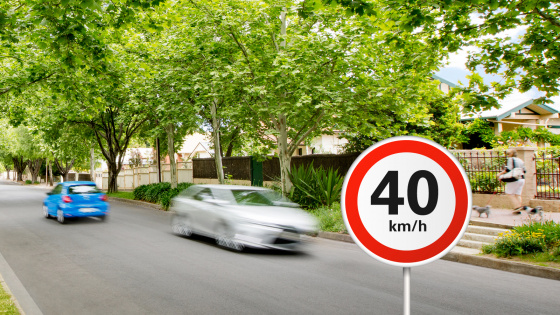Media gallery
Category: Cycling and transport
The City of Norwood Payneham & St Peters is committed to improving road safety, encouraging sustainable transport and enhancing community well-being.
The Council recognises that traffic speed directly affects the livability and safety of our streets and neighbourhoods. Lower speed limits can help improve safety and livability for all road users, without significantly impacting travel times or conditions for motorists.
The expected benefits of reducing the speed limit from 50 km/h to 40 km/h are to:
- Provide a safer road environment for pedestrians and cyclists on local roads
- Reduce the likelihood and severity of crashes.
Death and Injury Percentages Graphic:

Source: Austroads. Survivability rates vary significantly based on a number of factors and scenarios. Data taken from Research Report AP-R560-18 published in March 2018 by Austroads - the Association of Australian and New Zealand Road Transport and Traffic Authorities.
Speed limit changes starting April 2025
Starting in April 2025, the speed limit on residential streets in the following areas will reduce from 50 km/h to 40 km/h:
- Hackney, College Park, St Peters, Joslin, Royston Park, Marden, St Morris, Glynde, Firle, Payneham, Payneham South and Trinity Gardens.
What to expect:
- New speed limit signs will be installed to reflect the updated speed limit
- Temporary ‘Speed Limit Changed’ signs will be displayed for two months in affected areas
- South Australia Police (SAPOL) will be notified of the changes
- Information will be provided to affected properties, posted on social media and available on the Council’s website.
40km/h City-wide progress map
This map shows the suburbs with existing 40 km/h speed limits, those with approved limits, and areas under consideration for future 40 km/h speed limit changes.
Blue - Existing 40km/h
Purple - New 40km/h
Yellow - Future 40km/h

